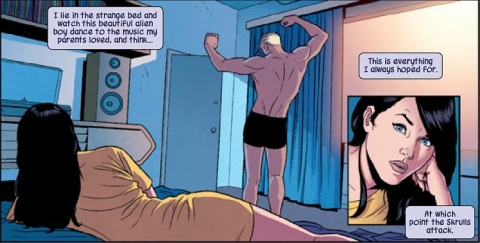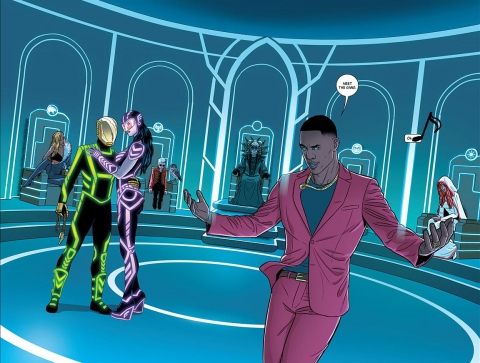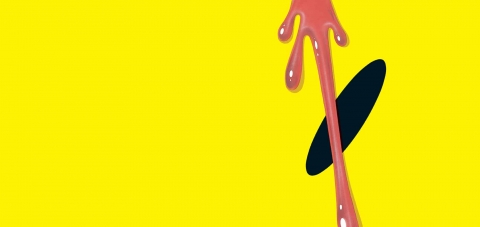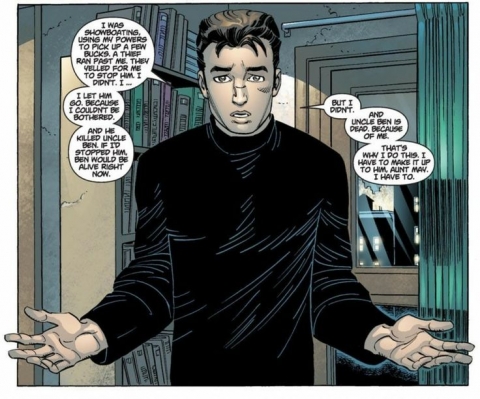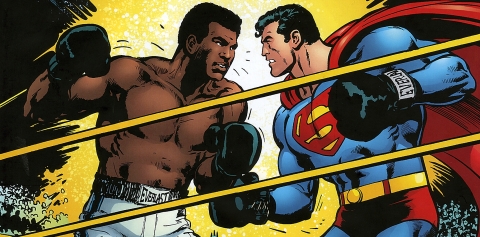52 weeks. 52 different writers. 2 trade paperbacks or hardcovers a week. Each week I’ll take a look at a different writer and read two different collected editions from within that person’s repertoire to help in the examination of their work.
Kieron Gillen is a former computer game and music journalist. His first work with frequent co-collaborator, Jamie McKelvie, came way back in 2003, when the two men provide a comic strip for the Playstation UK Magazine. In 2006, they created the Image Comic series, Phonogram, before creating two sequels for it, one that launched in 2008 and the other launching just a few short months ago. Gillen has found great success writing superhero comics for Marvel, writing the likes of Thor and the Uncanny X-Men before finally landing on Young Avengers. Gillen took the opportunity to provide readers with a truly unique take on the team that garnered much critical and fan acclaim for how progressive it was.
Young Avengers Volume 1: Style > Substance
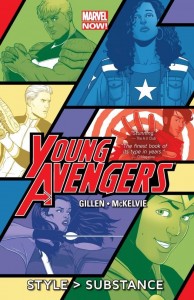 The Hulking and Wiccan, former members of the Young Avengers, are officially retired from being superheroes following the death of their good friend and teammate, Cassie Lang a.k.a. Stature. Living together with Wiccan’s adopted parents, the two love birds are happy with their new direction in life, or so Wiccan is lead to believe. The Hulking begins to sneak out at night and shape shift into other heroes so that he can fight crime. When Wiccan discovers this, the two lovers have a heartfelt breakdown in which The Hulking confesses to missing his deceased mother. Using his reality altering powers, Wiccan finds a version of The Hulking’s mother and brings her into their reality. At first everything seems great but that quickly gives way to a horrible series of events that threaten to destroy the young teenagers. Meanwhile, Kid Loki is trying to secretly help Wiccan and The Hulking…or is he? The mischievous god appears to be up to his old tricks while also forcing together a new team of Young Avengers. Miss America, a superhero from another reality, is contacted by Kid Loki to kill Wiccan which doesn’t sit well with her. While all this crazy stuff is happening down on Earth, Kate Bishop (a.k.a. Hawkeye) wakes up in Noh-Varr’s (a.k.a. Marvel Boy…but don’t call him that) bed in his spaceship. Then the Skrulls attack and their life gets a little difficult too.
The Hulking and Wiccan, former members of the Young Avengers, are officially retired from being superheroes following the death of their good friend and teammate, Cassie Lang a.k.a. Stature. Living together with Wiccan’s adopted parents, the two love birds are happy with their new direction in life, or so Wiccan is lead to believe. The Hulking begins to sneak out at night and shape shift into other heroes so that he can fight crime. When Wiccan discovers this, the two lovers have a heartfelt breakdown in which The Hulking confesses to missing his deceased mother. Using his reality altering powers, Wiccan finds a version of The Hulking’s mother and brings her into their reality. At first everything seems great but that quickly gives way to a horrible series of events that threaten to destroy the young teenagers. Meanwhile, Kid Loki is trying to secretly help Wiccan and The Hulking…or is he? The mischievous god appears to be up to his old tricks while also forcing together a new team of Young Avengers. Miss America, a superhero from another reality, is contacted by Kid Loki to kill Wiccan which doesn’t sit well with her. While all this crazy stuff is happening down on Earth, Kate Bishop (a.k.a. Hawkeye) wakes up in Noh-Varr’s (a.k.a. Marvel Boy…but don’t call him that) bed in his spaceship. Then the Skrulls attack and their life gets a little difficult too.
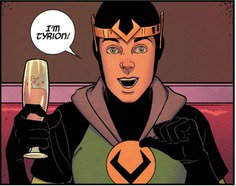 Kieron Gillen and Jamie McKelvie are dynamite with this wholly unique take on the Young Avengers, placing style over substance. This specific creative team is well-known for the pop music like influence they have on their work, exploring the mass appeal of things within pop culture. With Young Avengers, Gillen and McKelvie bring a whole new dynamic to a small Avengers roster. But the story sinks its roots deeper the further into it you look, being a rather personal story for a lot of the characters as well. When a spell by Wiccan goes terribly wrong, all adults in proximity of the teenager heroes when it was cast are suddenly walking husks of their former selves. The parents become parasitic, all thanks to the spell cast in which a reality destroying parasite was pulled through into our universe. From there Gillen explores the dynamic of these teenagers without the support of adults, coming into combat with some of the people most closely associated with them. It’s a “the kids are not alright” kind of take on these characters but to a startling degree, as it kicks up plenty of skeletons from within these characters’ closests. For some characters, their parents have been deceased for a while, only to sudden return to life and try to hunt them down. Although it hardly rocks these characters who have already experienced the loss of their parents once, it’s still some heavy conflict for these young characters to handle.
Kieron Gillen and Jamie McKelvie are dynamite with this wholly unique take on the Young Avengers, placing style over substance. This specific creative team is well-known for the pop music like influence they have on their work, exploring the mass appeal of things within pop culture. With Young Avengers, Gillen and McKelvie bring a whole new dynamic to a small Avengers roster. But the story sinks its roots deeper the further into it you look, being a rather personal story for a lot of the characters as well. When a spell by Wiccan goes terribly wrong, all adults in proximity of the teenager heroes when it was cast are suddenly walking husks of their former selves. The parents become parasitic, all thanks to the spell cast in which a reality destroying parasite was pulled through into our universe. From there Gillen explores the dynamic of these teenagers without the support of adults, coming into combat with some of the people most closely associated with them. It’s a “the kids are not alright” kind of take on these characters but to a startling degree, as it kicks up plenty of skeletons from within these characters’ closests. For some characters, their parents have been deceased for a while, only to sudden return to life and try to hunt them down. Although it hardly rocks these characters who have already experienced the loss of their parents once, it’s still some heavy conflict for these young characters to handle.
As I stated in the previous paragraph, the whole feel to this Young Avengers series is rather “pop” like, in a way readers have likely never experienced. It’s teenage drama, heartbreak, adventure, excitement, curiosity, and so many other things that teenagers experience but it plays like a pop song. Truthfully, it’s one of those things you need to read to fully internalize as words struggle to do this fascinating take justice. The themes I just mentioned have been tackled a million times in comics when it comes to teenage superheroes but not like this, not like the way Kieron and McKelvie set out to do. What that results in is a story you adore just as much for its content as you do the style in which it undertakes to convey it.
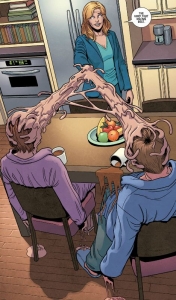 Diversity for the sake of being diverse can feel unnatural and forced, but that’s not something Gillen encounters with the cast of characters he chooses to play with in this volume. Instead, the diverse cast we get with story actually feels essential for the style of story Gillen is trying to tell. You get an African American teenage girl who is in the wrong reality, a childish God of Mischief, a gay couple that consists of a shape shifting alien whose race is hated and a reality shifting magic user, an alien who has no idea what he’s really doing, and a young average white teenage girl with no superpowers. Without all these different, unique characters so many of the beats for the story would just fall flat. The relationship of Wiccan and The Hulking is the backbone for the series, cast into the role of the two “forbidden” lovers who are still young enough to struggle with their sexual identities yet feel comfortable within them. This relationship is just a driving force for the plot, character development, and so many other vital parts of the series. With Miss America you get a sense of mystery, unsure who this character is or what fully motivates her as she has next to nothing tethering her to the current reality she resides in. Loki is equal parts comedic relief and a dramatic device designed specifically to always keep the reader guessing. You can never quite put your finger on what Loki is going to do next, all you know is that you can’t look away. With Noh-Varr and Kate Bishop, readers get the opposite end of the romantic spectrum in contrast to The Hulking and Wiccan. Kate Bishop and Noh-Var are just discovering their feeling for each other when we pick up with them in the story, having not really made much headway in terms of developing the comfort you see in the series’ other couple.
Diversity for the sake of being diverse can feel unnatural and forced, but that’s not something Gillen encounters with the cast of characters he chooses to play with in this volume. Instead, the diverse cast we get with story actually feels essential for the style of story Gillen is trying to tell. You get an African American teenage girl who is in the wrong reality, a childish God of Mischief, a gay couple that consists of a shape shifting alien whose race is hated and a reality shifting magic user, an alien who has no idea what he’s really doing, and a young average white teenage girl with no superpowers. Without all these different, unique characters so many of the beats for the story would just fall flat. The relationship of Wiccan and The Hulking is the backbone for the series, cast into the role of the two “forbidden” lovers who are still young enough to struggle with their sexual identities yet feel comfortable within them. This relationship is just a driving force for the plot, character development, and so many other vital parts of the series. With Miss America you get a sense of mystery, unsure who this character is or what fully motivates her as she has next to nothing tethering her to the current reality she resides in. Loki is equal parts comedic relief and a dramatic device designed specifically to always keep the reader guessing. You can never quite put your finger on what Loki is going to do next, all you know is that you can’t look away. With Noh-Varr and Kate Bishop, readers get the opposite end of the romantic spectrum in contrast to The Hulking and Wiccan. Kate Bishop and Noh-Var are just discovering their feeling for each other when we pick up with them in the story, having not really made much headway in terms of developing the comfort you see in the series’ other couple.
What’s most exciting about the series is that it doesn’t rely on doing the same trick over and over again. Gillen and McKelvie seek to break new ground and do so repeatedly with this story, as they are always looking to move forward. A perfect example of this is the fact that McKelvie’s design work is always trying new things. During action sequences you can see the creative team actively go out of their way to try to do something different. Look at the different fights that take place between Miss America and Loki for a perfect example, or the moment when the Skrulls attack Kate Bishop and Noh-Varr. If that isn’t enough for you, look to scenes like when the team takes on all the adults during the climax of the book or even the brilliant sequence in the second issue where Hulking and Wiccan are trapped within the confines of a comic page with only Kid Loki as their saving grace. This comic experiments within the superhero genre in ways that you’ll be hard sought to find anywhere else. It’s not a redeeming factor for this book, it’s a selling point, as Gillen and McKelvie take pop music sensibilities and blend it up with teenage angst to give you one of the best superhero books from the last few years.
Collects: Young Avengers #1-5.
Best Character: Kid Loki.
Best Line Of Dialogue/Caption: “Come with me if you want to be awesome.” – Noh-Varr.
Best Scene/Moment: A trapped Hulking and Wiccan get help from Kid Loki – Issue 2.
Best Issue: Issue 4. The fourth issue of this first collection is everything that Gillen and McKelvie set out to do with this take on the Young Avengers. First, the action sequence in the start of this issue is crazy amounts of fun and hilarious, being styled with some excellent, unique panel layouts. Secondly, all the characters enter the struggle, giving the readers their first full glimpse of the team together. Third, the character moments in this issue are strong, whether they be comedic, deceptive, or even heartbreaking. Lastly, it’s just awesome.
Why You Should Read It: A bold, refreshing take of the superhero genre (and the world’s youth circa 2013), Young Avengers is everything anyone who is in touch with modern pop culture would want to read. It’s progressive and not shy about it, being a book that strongly ties to the LGBT community through the use of it’s diverse and believable characters. An incredible cast, a deceptively powerful story, and more style than you thought possible jammed into one book, Young Avengers is everything you could ask for from a modern superhero book.
The Wicked + The Divine Vol 1: The Faust Act
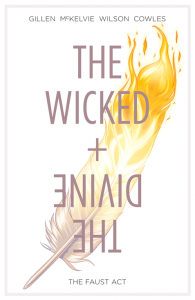 Kieron Gillen is a particularly fascinating creator in the sense that he always appears as readily vulnerable to his readers. A man who wears his heart on his sleeve, Gillen first came up with the idea for his hit Image Comics series, The Wicked + The Divine, when his father was diagnosed with terminal cancer. The idea of death being inevitable is a prominent theme in the series and has helped propel it forward in the short time it has been around. Teaming with frequent co-collaborator, Jamie McKelvie, Gillen brought his unique take on pop culture to the book by casting twelve gods of the Pantheon as teenage pop stars, blurring the line between past and present day worship of gods.
Kieron Gillen is a particularly fascinating creator in the sense that he always appears as readily vulnerable to his readers. A man who wears his heart on his sleeve, Gillen first came up with the idea for his hit Image Comics series, The Wicked + The Divine, when his father was diagnosed with terminal cancer. The idea of death being inevitable is a prominent theme in the series and has helped propel it forward in the short time it has been around. Teaming with frequent co-collaborator, Jamie McKelvie, Gillen brought his unique take on pop culture to the book by casting twelve gods of the Pantheon as teenage pop stars, blurring the line between past and present day worship of gods.
Every ninety years, twelve gods come down to Earth and inhabit the bodies of random humans for two years. Then they die. In the year 2014, a young English teenager named Laura worships this cycle of gods, taking on the roles of pop stars for millions to worship. With the clock already ticking down on many of these gods, Laura enjoys them while she still can, attending concerts for all members of the “Pantheon”. When Laura sneaks away from college to attend Amaterasu’s latest concert, her life changes forever. Passing out amongst a wave of adoring fans, fainting from the radiant glow given off of Amaterasu, Laura awakens on the floor with Luci (yeah, that’s short for Lucifer), kneeling at her feet. Luci seems stricken by Laura and her fan girl nature towards all the gods, deciding to take her to meet some of the other gods who are getting interviewed in a penthouse following the concert. Laura is in awe over the fact that she’s even in the same room as some of these beings but things quickly descend into madness when two gunmen attempt to assassinate everyone in the penthouse. Luci acts quickly, killing the two gunmen but creates problems for her kind by displaying a violent nature. With Luci heading to court over her actions, things go from bad to worse rather quickly, and all Laura can do is stand there in amazement as she begins to get everything she ever wanted.
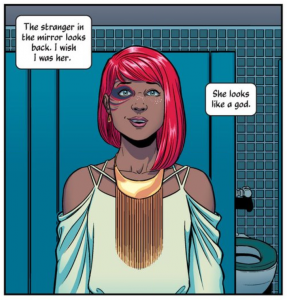 It’s a central theme through the work that Kieron Gillen and Jamie McKelvie do together; pop music, or more specifically, pop culture. They infuse the nature that surrounds pop culture into all their bodies of work, doing just this unique type of art that is derivative from already existing art, which is the sole basis for what is pop music. There’s a lot of layers to what they do, so much so that I wouldn’t be surprised if it goes lost on even the creators themselves from time to time. The Wicked + The Divine at its core is about never having enough time to live. The age-old adage of “life’s too short” just rings through ever clearly with this series, reminding everyone that the life you want to lead never lasts as long as you want. It’s almost morbid, to sit here and realize that is what the series is essentially all about, the fact that you die far too soon and it’s something that should worry you, but Gillen and McKelvie do a great job of hiding that under a few glossy layers beneath the surface. Much like pop music (see what I mean, more layers), you can take what’s in front of you at face value or you can dig beneath that surface layer to see what the song is truly about. With The Wicked + The Divine, you have the option to either take the surface layer of the story as a take on one’s desire for success or you can dig deeper to find other, more prominent themes. When you sink deeper into the narrative you can see that success or the thing you think you truly want never lasts as long as you think it should, sometimes resulting in you taking things for granted or allowing life to pass you right by. If you dig even further beneath that layer of story, you find the layer that essentially screams “we all die someday”. Dark, morbid, and “none more goth” than that outlook, The Wicked + The Divine does a brilliant job of hiding its moody outlook underneath a beautiful layer of feel good pop music. It’s all part of the reason why Gillen chooses to make the gods of this series into pop stars, casting them as the false idols they are, since people in our current generation idolize musicians as false prophets, practically licking the ground upon which they walk.
It’s a central theme through the work that Kieron Gillen and Jamie McKelvie do together; pop music, or more specifically, pop culture. They infuse the nature that surrounds pop culture into all their bodies of work, doing just this unique type of art that is derivative from already existing art, which is the sole basis for what is pop music. There’s a lot of layers to what they do, so much so that I wouldn’t be surprised if it goes lost on even the creators themselves from time to time. The Wicked + The Divine at its core is about never having enough time to live. The age-old adage of “life’s too short” just rings through ever clearly with this series, reminding everyone that the life you want to lead never lasts as long as you want. It’s almost morbid, to sit here and realize that is what the series is essentially all about, the fact that you die far too soon and it’s something that should worry you, but Gillen and McKelvie do a great job of hiding that under a few glossy layers beneath the surface. Much like pop music (see what I mean, more layers), you can take what’s in front of you at face value or you can dig beneath that surface layer to see what the song is truly about. With The Wicked + The Divine, you have the option to either take the surface layer of the story as a take on one’s desire for success or you can dig deeper to find other, more prominent themes. When you sink deeper into the narrative you can see that success or the thing you think you truly want never lasts as long as you think it should, sometimes resulting in you taking things for granted or allowing life to pass you right by. If you dig even further beneath that layer of story, you find the layer that essentially screams “we all die someday”. Dark, morbid, and “none more goth” than that outlook, The Wicked + The Divine does a brilliant job of hiding its moody outlook underneath a beautiful layer of feel good pop music. It’s all part of the reason why Gillen chooses to make the gods of this series into pop stars, casting them as the false idols they are, since people in our current generation idolize musicians as false prophets, practically licking the ground upon which they walk.
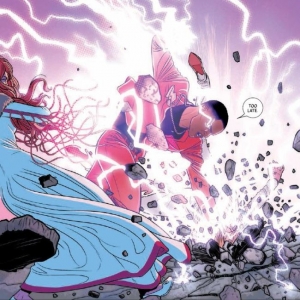 Some of the best synchronicity between the way our current pop culture is perceived and the way things are in the Wicked + The Divine is how visually each god appears to reflect a past or present pop artist. Kieron Gillen decides to draw from multiple religions and beliefs for his cast of gods, from the obvious ones like Lucifer (as he/she pertains to Christianity) or Minerva (pertaining to the Greek gods and Roman culture) to more obscure ones like The Morrigan (of Irish descent) or Baal (who has far too many different interpretations to list). What’s even more brilliant is the look of these characters in regards to their real lifecounterparts isn’t where the comparisons start and end, as almost every single god based on a pop artist adapts at least one aspect of said artist’s personality. The best examples of this lies in the characters of Baal and Luci, who are supposed to be takes on the artists Kanye West and David Bowie respectively. Baal is cocky and woefully over-confident, believing that he is the best thing to have ever walked this Earth. The way his personality matches up with that of Kanye West’s is almost eerie, as the two men are narcissistic to a fault. The Luci/Bowie connection is so much fun to deconstruct, from her affinity of cocaine to her eccentric attitude or even the androgynous appearance, it’s all there. It goes even further than just these two fine examples with Woden capturing the essence of the group Daft Punk while Sakhmet is a near spitting image of Rihanna. Gillen wisely holds back from showing you every single member of the “Pantheon”, leaving a few other unique interpretations of gods left for later on in the story.
Some of the best synchronicity between the way our current pop culture is perceived and the way things are in the Wicked + The Divine is how visually each god appears to reflect a past or present pop artist. Kieron Gillen decides to draw from multiple religions and beliefs for his cast of gods, from the obvious ones like Lucifer (as he/she pertains to Christianity) or Minerva (pertaining to the Greek gods and Roman culture) to more obscure ones like The Morrigan (of Irish descent) or Baal (who has far too many different interpretations to list). What’s even more brilliant is the look of these characters in regards to their real lifecounterparts isn’t where the comparisons start and end, as almost every single god based on a pop artist adapts at least one aspect of said artist’s personality. The best examples of this lies in the characters of Baal and Luci, who are supposed to be takes on the artists Kanye West and David Bowie respectively. Baal is cocky and woefully over-confident, believing that he is the best thing to have ever walked this Earth. The way his personality matches up with that of Kanye West’s is almost eerie, as the two men are narcissistic to a fault. The Luci/Bowie connection is so much fun to deconstruct, from her affinity of cocaine to her eccentric attitude or even the androgynous appearance, it’s all there. It goes even further than just these two fine examples with Woden capturing the essence of the group Daft Punk while Sakhmet is a near spitting image of Rihanna. Gillen wisely holds back from showing you every single member of the “Pantheon”, leaving a few other unique interpretations of gods left for later on in the story.
Perhaps one of the most fascinating and fun parts of The Wicked + The Divine is how the main character of Laura, just an average teenage girl, manages to stack up against all these interesting gods you’re shown. Laura is a normal student who is obsessed with the gods/pop artists, travelling long and far sometimes to watch these unique beings do what they do best: entertain. Her fan girl nature is infectious, largely due to the exceptional powers of these gods, but it still draws you into the story because she feels just like you. With all these characters who can do these miraculous things, it’d be easy for Laura to just become a forgettable character, lost in the shuffle of standouts like Luci or Baal, who simply dominate any scene they appear in. It’s Laura’s sense of humility, the sheer scope of how little she feels in comparison to some of these gods, that makes her so interesting. She sees herself as so much less than what she is when she’s next to these gods and so badly wants to be just like them because before they became gods the members of the Pantheon were just regular teenagers like her too. It’s her sense of hope, her mystified, starry-eyed look, her desire to not explode into tears of joy every time Baal even talks to her, that keeps Laura relevant as a character who has no business even being such. She’s the human element in a story about being human, in a story about the inevitability of death. When you think about it, the only thing more human than living is dying because that is essentially all we do. Gods are these mythical beings, forming timeless and unforgettable stories around them so that they’re remembered forever. In some small way, every human wants to be remembered for something, to leave their mark on this world and that’s something Laura perfectly encompasses as the lead character.
Collects: The Wicked + The Divine #1-5.
Best Character: Luci.
Best Line Of Dialogue: “When you’re as good as I am? This is humble.” – Baal.
Best Scene/Moment: Luci doesn’t give a s*$& about your rules – Issue 4.
Best Issue: Issue 5. It’s incredibly difficult to choose a standout issue amongst all the quality work on display during this first arc. Issue 5 gets the nod because of how effectively it brings the plot to a simmer. There’s plenty of action, drama, intrigue, and important developments in this issue that propels the comic into a fantastic second arc. By the end of this issue, readers will realize that anything can and will happen with this exceptional series.
Why You Should Read It: The Wicked + The Divine is a book that, two years after its run has wrapped up, will probably be irrelevant, but I think that’s kind of the point. Kieron Gillen and Jamie McKelvie are doing more than just telling a story with The Wicked + The Divine, trying to show how they see the state of pop culture in the years of 2014/2015. Six years from now the state of pop culture will likely be wildly different, making this interpretation irrelevant, but again I can’t help but feel like that might be part of their goal. Kieron Gillen and Jamie McKelvie build a fascinating cast of gods from all walks of life but keep it all together with the incredibly human character of Laura. The artwork and layouts are some of the most beautiful work you’ll find today from McKelvie and Kieron Gillen shows that he can make this book into whatever he wants it to be. If you want to stay hip, you should probably pick up this book with haste.

